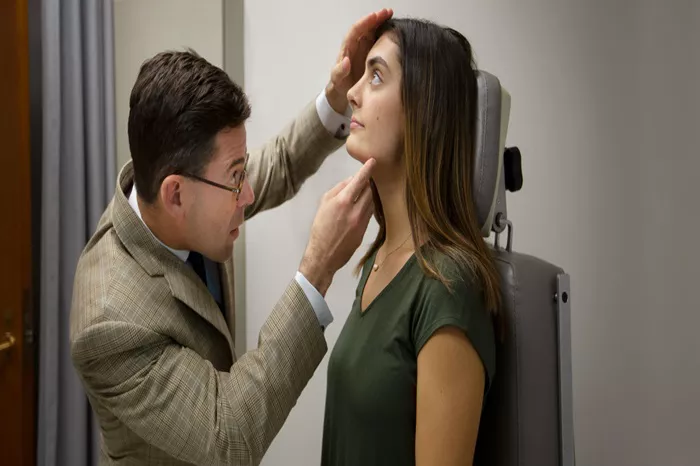A nose job, also known as rhinoplasty, is a popular procedure for enhancing the shape and function of the nose. While many seek this surgery for cosmetic reasons, it can also address medical issues. Understanding how to get a nose job paid for by insurance can make a significant financial difference.
Understanding Rhinoplasty
What is Rhinoplasty?
Rhinoplasty is a surgical procedure aimed at reshaping the nose for either aesthetic enhancement or functional improvement. It can correct issues like a deviated septum, nasal obstructions, or congenital defects.
Types of Rhinoplasty
Cosmetic Rhinoplasty: Focuses on the appearance of the nose.
Functional Rhinoplasty: Aims to improve nasal function and breathing.
Reconstructive Rhinoplasty: Repairs damage from injury or congenital defects.
Common Reasons for Rhinoplasty
Medical Reasons
Deviated Septum: A common condition where the nasal septum is displaced.
Chronic Sinusitis: Persistent sinus infections that affect breathing.
Nasal Fractures: Repairing the nose after an injury.
Cosmetic Reasons
Aesthetic Enhancement: Improving the overall appearance and harmony of facial features.
Correcting Asymmetry: Addressing uneven nostrils or nasal shape.
Insurance Coverage Basics
Understanding Health Insurance
HMO (Health Maintenance Organization): Requires referrals for specialists.
PPO (Preferred Provider Organization): Offers more flexibility in choosing providers.
EPO (Exclusive Provider Organization): A blend of HMO and PPO features.
Key Terms to Know
Premium: The amount paid for insurance coverage.
Deductible: The out-of-pocket cost before insurance coverage begins.
Copayment: A fixed fee for services.
Coinsurance: The percentage of costs shared with the insurance company.
Criteria for Insurance Coverage
Medically Necessary vs. Cosmetic
Medically Necessary: Procedures required to treat a medical condition.
Cosmetic: Procedures aimed at improving appearance, usually not covered.
Insurance Policy Guidelines
Pre-Authorization: Approval required before undergoing the procedure.
Documentation: Detailed medical records and proof of necessity.
See also: What Types Of Nose Jobs Are Covered By Insurance?
Steps to Get Insurance to Cover Your Nose Job
Step 1: Consult with a Qualified Surgeon
Board Certification: Ensure the surgeon is certified by a recognized board.
Experience: Look for a surgeon with extensive experience in rhinoplasty.
Reputation: Read reviews and ask for referrals.
Initial Consultation
Medical Evaluation: Assess your medical condition and need for surgery.
Discussion of Options: Explore both functional and cosmetic aspects.
Documentation: Gather necessary medical records and previous treatments.
Step 2: Gather Necessary Documentation
Medical Records
Previous Treatments: Document all treatments related to nasal issues.
Diagnostic Tests: Include results of any tests, like CT scans or X-rays.
Doctor’s Notes: Detailed notes from your surgeon supporting the need for surgery.
Insurance Forms
Pre-Authorization Forms: Fill out and submit necessary forms.
Letters of Medical Necessity: Written by your doctor to explain the medical need.
Step 3: Submitting Your Insurance Claim
Preparing Your Claim
Complete Documentation: Ensure all forms and documents are included.
Accurate Information: Double-check that all information is correct.
Submitting the Claim
Follow Procedures: Submit according to your insurance company’s guidelines.
Keep Copies: Retain copies of all documents and correspondence.
Step 4: Dealing with Denials
Understanding Denials
Common Reasons: Lack of documentation, perceived as cosmetic, missing pre-authorization.
Appeal Process: Steps to take if your claim is denied.
Appealing a Denied Claim
Review Denial Letter: Understand the reason for denial.
Submit an Appeal: Provide additional documentation and a detailed letter.
Seek Help: Consider a patient advocate or legal advice.
Tips for a Successful Insurance Claim
Be Thorough and Persistent
Comprehensive Records: Ensure all medical records and documentation are thorough.
Clear Medical Need: Clearly outline the medical necessity for the procedure.
Follow Up
Regular Contact: Stay in touch with your insurance company.
Timely Responses: Respond promptly to any requests for additional information.
Utilize Resources and Support
Patient Advocates
Role of Advocates: Assist in navigating the insurance process.
Finding an Advocate: Check with your hospital or medical provider.
Legal Assistance
When to Seek Legal Help: If appeals are repeatedly denied.
Finding Legal Support: Look for lawyers specializing in medical insurance claims.
Conclusion
Getting a nose job paid for by insurance requires understanding the criteria for medical necessity and navigating the insurance claim process. By consulting with a qualified surgeon, gathering detailed documentation, and being persistent in following up with your insurance company, you can increase your chances of getting your rhinoplasty covered. Utilize available resources and support to assist you in this process, ensuring that your medical needs are addressed without unnecessary financial burden.
Related topic:
How Much Does Septorhinoplasty Cost With Insurance?
How Much Does Rhinoplasty Cost With Insurance?
Does Insurance Cover Buccal Fat Removal?


